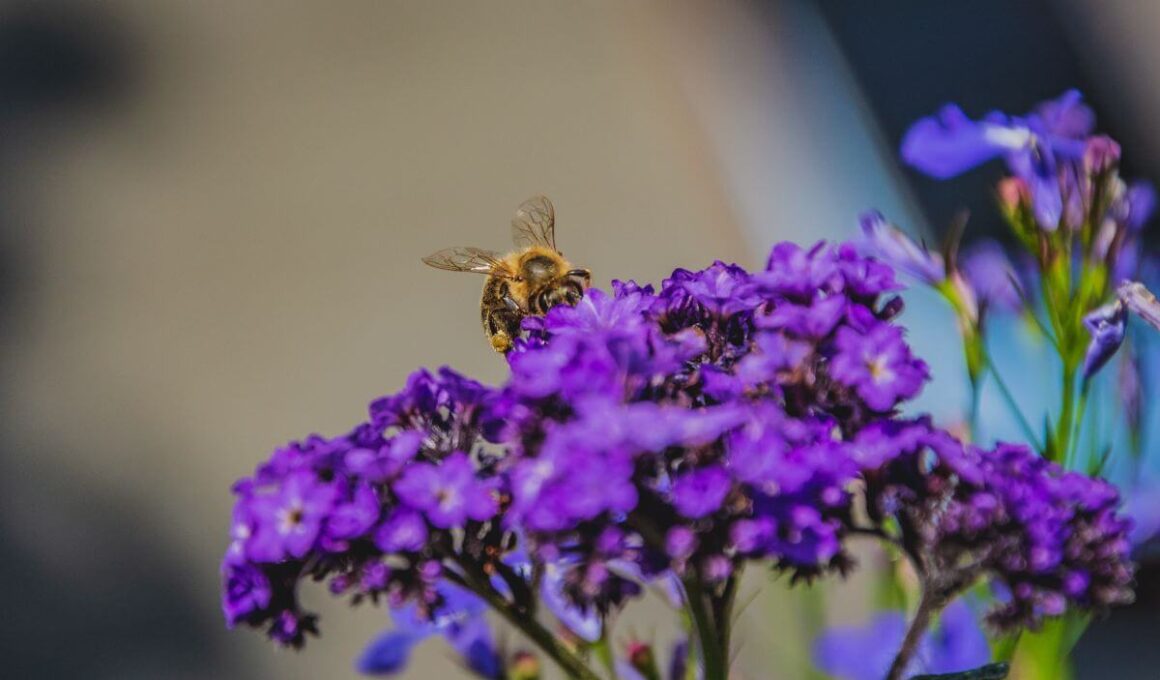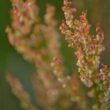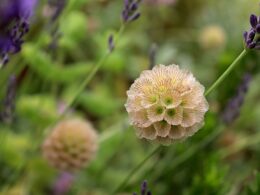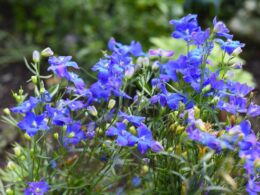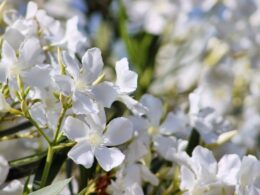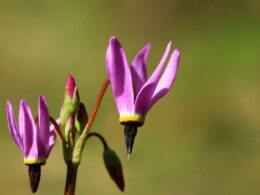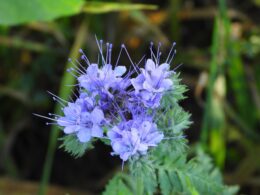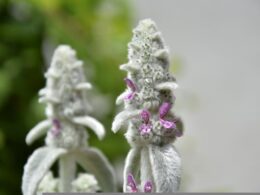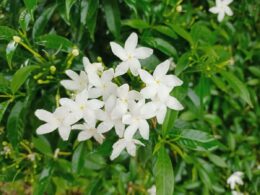About Heliotrope (Heliotropium Arborescens)
Heliotrope, also known as cherry pie, is a plant in the borage family. The name comes from the Greek words for “sun” and “turning,” because heliotrope flowers are thought to follow the sun as it moves across the sky. In this article, we’ll take a closer look at the species Heliotropium arborescens (garden heliotrope).
The plant is native to Bolivia, Colombia and Peru, but it has been introduced to many other parts of the world. Heliotrope is usually grown as an annual, although it can sometimes survive as a tender perennial in mild climates (zones 10-11).
The plant typically grows to a height of about 1-3 feet and produces clusters of small flowers that range from deep purple to white, depending on the cultivar. The flowers attract bees and other pollinators.
Heliotrope is often used as a decorative plant in gardens and patio pots. It can also be used in floral arrangements. The flowers have a strong fragrance, which is sometimes described as being similar to vanilla, almond or cherry. That’s why they’re sometimes called cherry pies!
Heliotrope Flower Meaning and Symbolism
The heliotrope flower has a few different meanings, depending on the culture. In some cultures, they’re associated with love and devotion. In others, they’re seen as a symbol of good luck or fortune.
There’s a classical myth associated with these flowers. The Latin narrative poem Metamorphoses by Ovid tells the story of a water nymph named Clytie. She was in love with the sun god Helios, who betrayed her. She was so hurt that she wasted away, transforming into a heliotrope and continued to face the sun forever.
In terms of more practical meaning, heliotrope sap was used as a food coloring in the Middle Ages and Early Modern French cuisine. Garden heliotrope is also grown as a perfume ingredient.
Varieties of Heliotrope Flowers
As we mentioned, heliotrope flowers come in a range of colors. The most common colors are purple and white, but you can also find them in shades of pink, blue and lavender. Some of the most popular heliotrope cultivars include:
- ‘Princess Marina’ – a hardy plant with deep violet-purple flowers, valued for their strong, sweet fragrance;
- ‘Marine’ – dark purple or indigo flowers with a vanilla-like scent;
- ‘Sweet Heaven’ – a heat-tolerant variety with pale lavender flowers that smell like lilacs and almonds;
- ‘White Lady’ – pure white, fragrant flowers;
- ‘Marine Blue’ – an annual heliotrope with deep blue flowers and a sweet vanilla fragrance.
Can you already imagine which heliotrope flower would be perfect for your garden or home? Read on to find out how to grow these beautiful plants.
How to Grow Heliotrope Plants – Heliotrope Care Tips
Heliotropes aren’t difficult to grow, and they make beautiful additions to any garden. Here are a few tips on how to get started.
Light
Choose a sunny spot in your garden or home for planting. heliotrope plants need at least six hours of direct sunlight per day to thrive. Morning sun is preferred, as intense afternoon rays can cause the delicate flowers to scorch.
Soil
Heliotrope flowers prefer well-drained, rich, loamy soil. Organic matter is necessary for the plant to produce flowers. If your soil is heavy or clay-like, mix in some sand or compost to improve drainage. The ideal soil pH is between 6.6 and 7.3.
Watering
Water heliotropes regularly, especially during hot weather. Keep the soil evenly moist, never allowing it to dry out completely. On the other hand, overwatering can lead to root rot, so be sure not to overwater your plants. If you’re growing them in containers, water them when the surface of the soil is just beginning to feel dry.
Fertilizer
Prepare the soil by adding a balanced fertilizer meant for flowering plants before planting heliotropes. Once they’re established, you can feed them every two weeks with the same kind of water-soluble fertilizer.
Temperatures
Heliotrope plants are not frost-tolerant, so they should be planted after the last frost of the season (unless you’re growing them indoors). They’re also heat-sensitive, so provide them with some afternoon shade in hot weather. Some cultivars are more tolerant of heat, but in general, the ideal temperature range is 70-75 F.
Humidity
Despite being a tropical plant, heliotrope doesn’t like humid air. If the air is too humid, the leaves will start to yellow and drop off. If you live in a humid climate, grow heliotrope in containers, so you can move them indoors during periods of high humidity.
Pruning
To encourage bushier growth and more flowers, cut heliotropes back by about a third after they finish blooming. You can also deadhead the flowers to prevent them from going to seed and encourage new growth.
Pests and Diseases Affecting Heliotrope Flowers
Heliotrope plants are relatively resistant to pests and diseases, but they can be affected by mealybugs, aphids, whiteflies, and spider mites. If you see any of these pests on your heliotropes, you can treat them with an insecticidal soap or neem oil.
Like most houseplants, they’re also susceptible to root rot, powdery mildew, and leaf spot. These problems are usually caused by too much water or humidity. To prevent them, make sure to plant heliotropes in well-drained soil and don’t overwater them.
Heliotrope Toxicity
All parts of heliotrope plants contain pyrrolizidine alkaloids, which are poisonous if ingested, so keep the flowers away from children and pets. The sap can also cause skin irritation in some people, so it’s best to wear gloves when handling the plant. If you have heliotropes in your garden, make sure they’re not within reach of small children or pets.
Now you know everything there is to know about heliotrope flowers. With a little care, you can grow these beautiful plants in your garden or home. Happy gardening!





